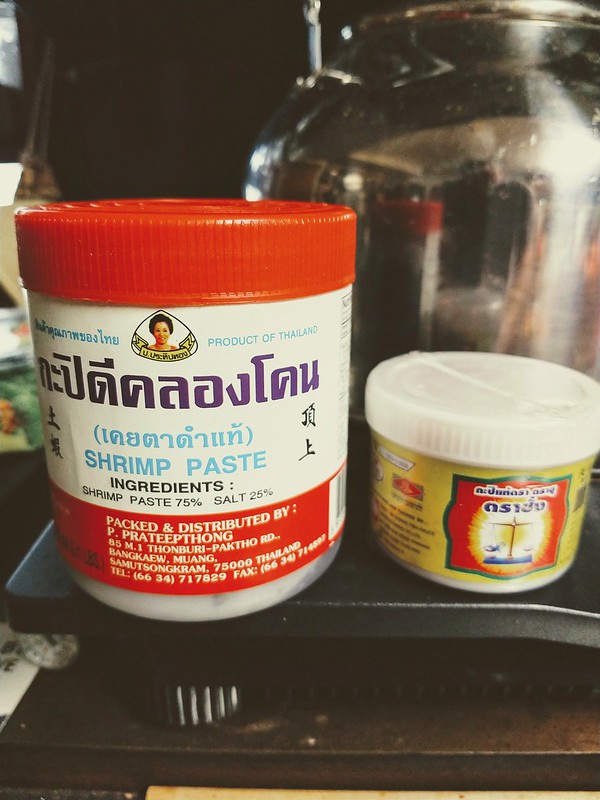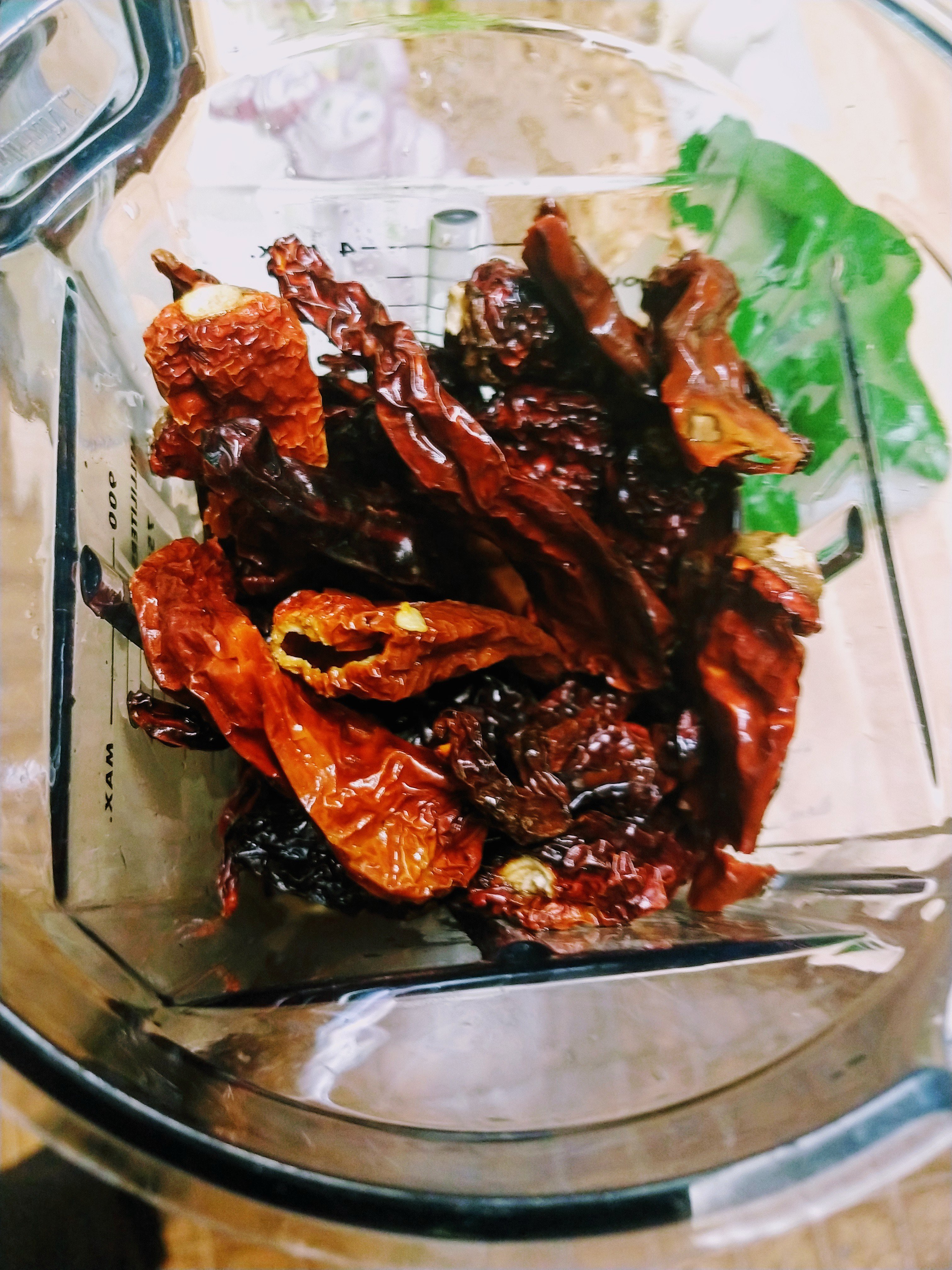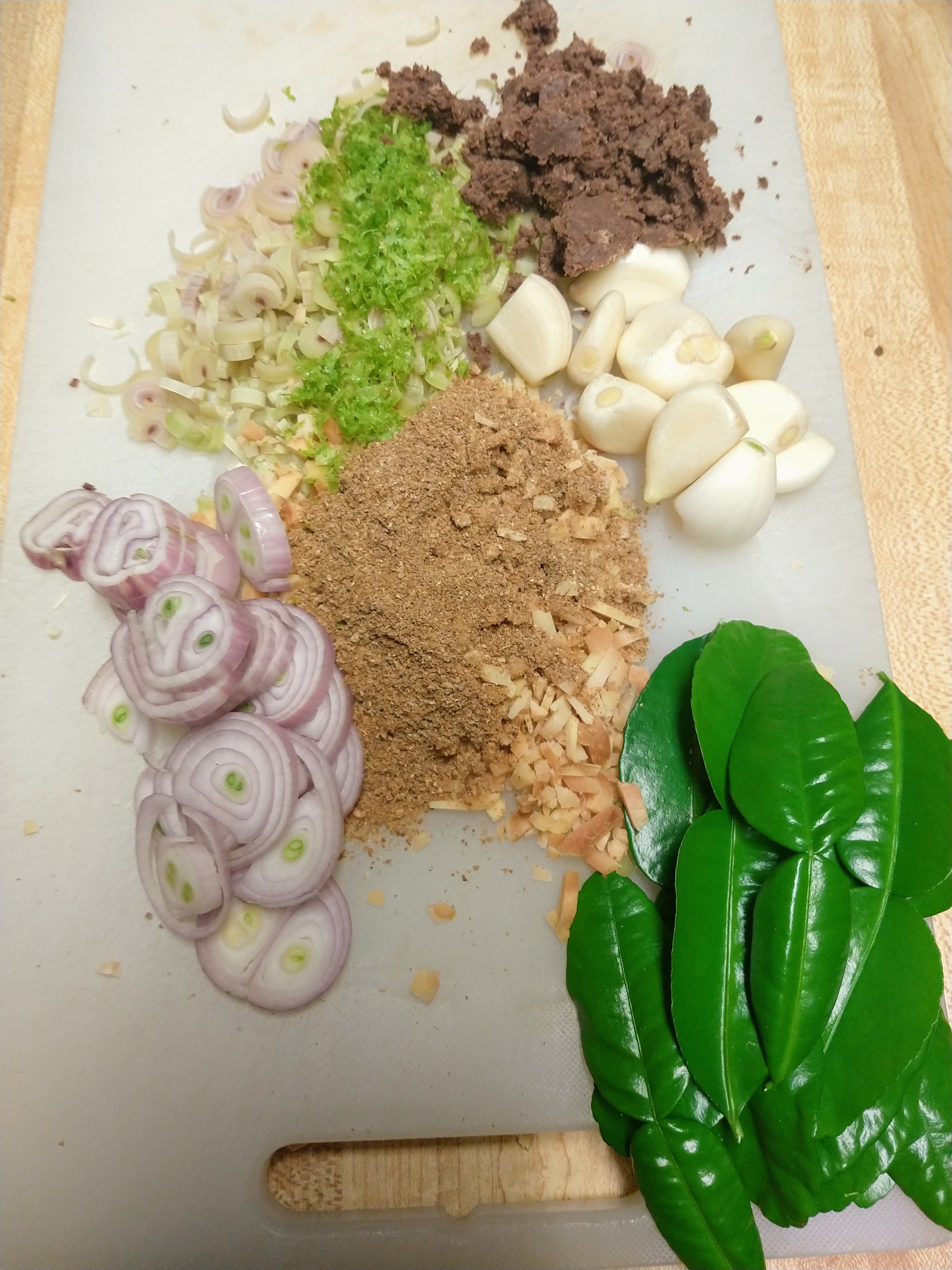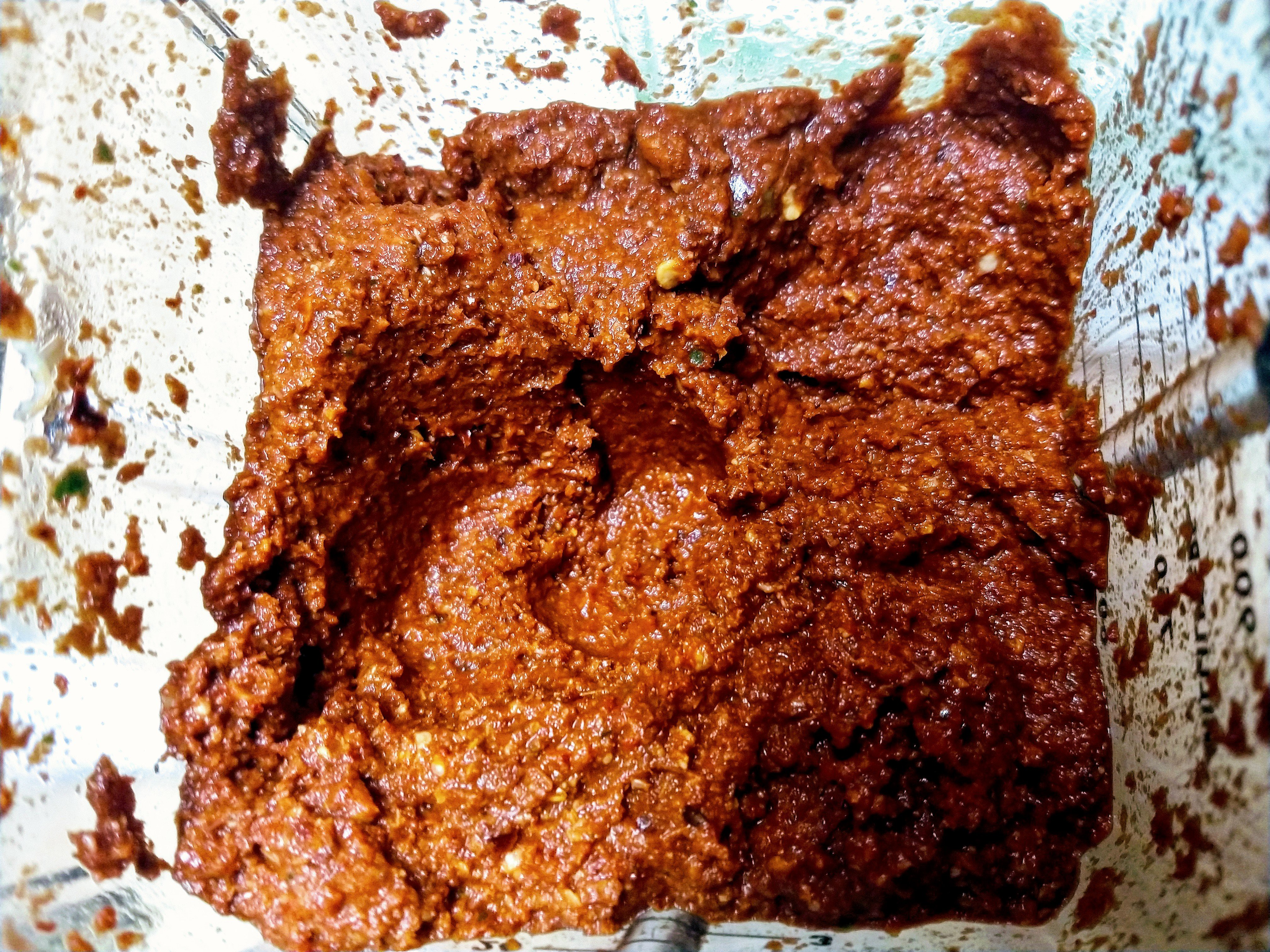CraigC
Master Chef
- Joined
- Jan 27, 2011
- Messages
- 6,486
Someone asked me to post some Thai curry paste recipes in another thread. This is a version of red. Enjoy!
Thai Red Curry Paste
Ingredients
3 oz dried New Mexico chilis
12 small hot chilis, such as arbol or Thai bird
1 Tbsp whole corriander seed
1-1/2 Tbsp shrimp paste (available @ oriental markets) This gets double wrapped in foil, about a 2" square package.
3/4 C chopped shallots or red onion
1/2 C whole, peeled garlic cloves
1/2 Tbsp minced, fresh Kaffir lime peel or persian lime peel. I usually substitute key lime zest.
2 large stalks lemon grass, outer leaves discarded, using about the first 3" from the root end only. Cut into thin rounds.
!/2 C finely chopped, peeled fresh galanga or fresh ginger. I use frozen galanga.
Bring a small sauce pan of water to a boil. Stem and seed chilis. Cut in 1/2 lengthwise and remove as many veins as possible. Cut halves into 3/4" strips crosswise and reserve. Stem and shake out most of the seeds from the hot chilis or leave them if you really like spicy Thai. Cut the hot chilis into small pieces. When water comes to a boil, remove from heat, add all the chilis and let rehydrate for 30 minutes.
In a small skillet toast the corriander seeds until fragrent, making sure to shake the pan to prevent burning. Transfer seeds to a small bowl to cool. Place the skillet back over medium heat and add the packet of shrimp paste, cook for about 5 minutes, until fragrent, turning packet several times. Set asided to cool. Place the skillet back over medium heat, add the shallots and garlic. Dry fry until soft and slightly browned, anout 5 minutes. In a spice grinder, process the corriander seeds to a powder and transfer to a blender or food processer (metal blade). Add the lemon grass, lime zest, galanga, shallots and garlic to the blender. Add the cooled shrimp paste. Drain the chilis, keeping 1/2 cup of the liquid. Add chilis to the blender. Blend/process ingredients until a thick, smooth paste is formed. You will have to pause to scrape down the sides. You can add a couple Tbsp of soaking liquid to assist in the processing if it appears too thick. This recipe will give you about 1-1/2 cups. It will last about 1 month in an air tight container in the fridge or 3 months in the freezer.
You can add as much heat as you like. Simply add more hot chilis in the paste or fresh chilis in your final dish recipe.
Thai Red Curry Paste
Ingredients
3 oz dried New Mexico chilis
12 small hot chilis, such as arbol or Thai bird
1 Tbsp whole corriander seed
1-1/2 Tbsp shrimp paste (available @ oriental markets) This gets double wrapped in foil, about a 2" square package.
3/4 C chopped shallots or red onion
1/2 C whole, peeled garlic cloves
1/2 Tbsp minced, fresh Kaffir lime peel or persian lime peel. I usually substitute key lime zest.
2 large stalks lemon grass, outer leaves discarded, using about the first 3" from the root end only. Cut into thin rounds.
!/2 C finely chopped, peeled fresh galanga or fresh ginger. I use frozen galanga.
Bring a small sauce pan of water to a boil. Stem and seed chilis. Cut in 1/2 lengthwise and remove as many veins as possible. Cut halves into 3/4" strips crosswise and reserve. Stem and shake out most of the seeds from the hot chilis or leave them if you really like spicy Thai. Cut the hot chilis into small pieces. When water comes to a boil, remove from heat, add all the chilis and let rehydrate for 30 minutes.
In a small skillet toast the corriander seeds until fragrent, making sure to shake the pan to prevent burning. Transfer seeds to a small bowl to cool. Place the skillet back over medium heat and add the packet of shrimp paste, cook for about 5 minutes, until fragrent, turning packet several times. Set asided to cool. Place the skillet back over medium heat, add the shallots and garlic. Dry fry until soft and slightly browned, anout 5 minutes. In a spice grinder, process the corriander seeds to a powder and transfer to a blender or food processer (metal blade). Add the lemon grass, lime zest, galanga, shallots and garlic to the blender. Add the cooled shrimp paste. Drain the chilis, keeping 1/2 cup of the liquid. Add chilis to the blender. Blend/process ingredients until a thick, smooth paste is formed. You will have to pause to scrape down the sides. You can add a couple Tbsp of soaking liquid to assist in the processing if it appears too thick. This recipe will give you about 1-1/2 cups. It will last about 1 month in an air tight container in the fridge or 3 months in the freezer.
You can add as much heat as you like. Simply add more hot chilis in the paste or fresh chilis in your final dish recipe.





